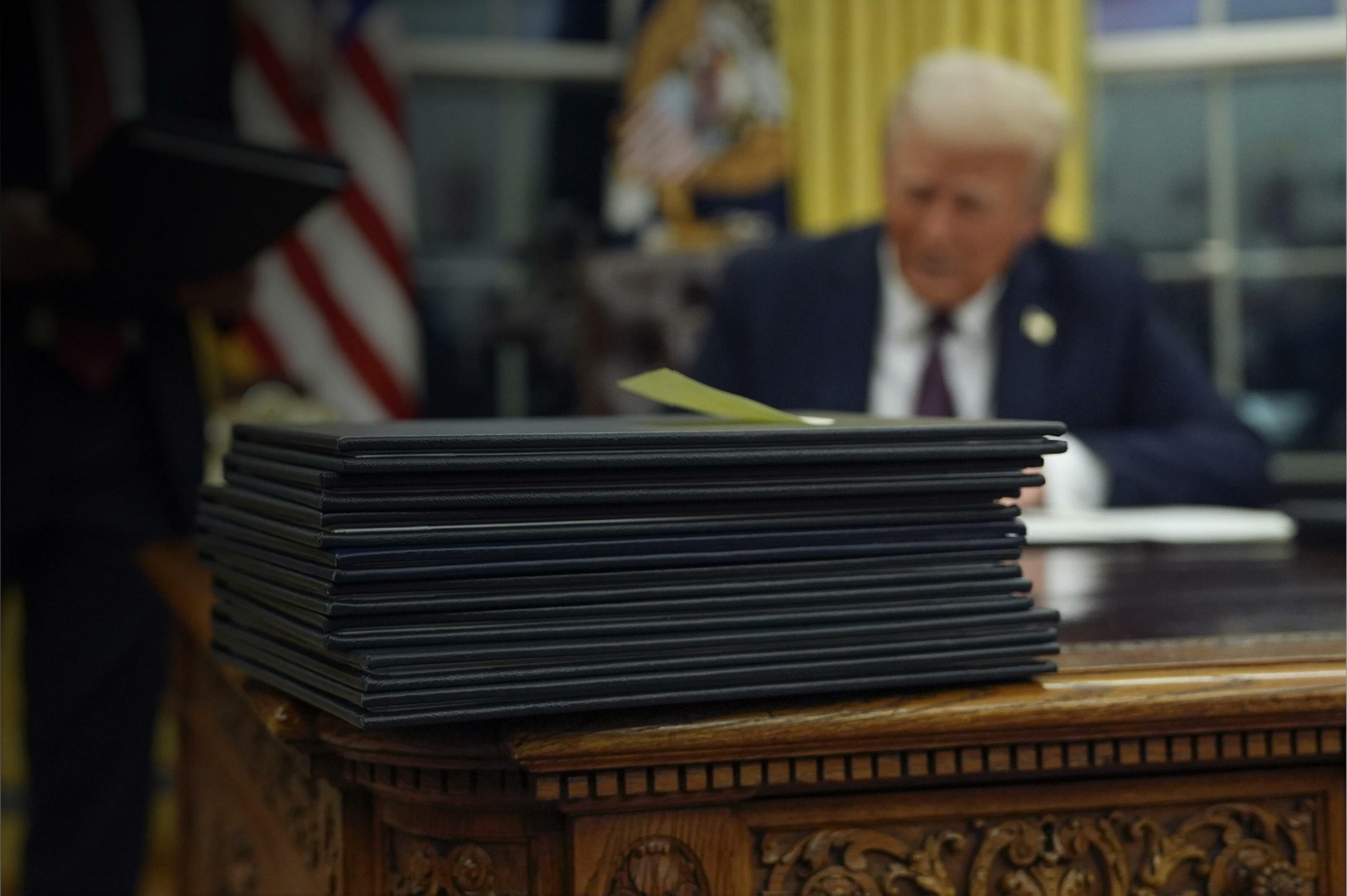Wang, who traveled to Washington to attend Trump's inaugural festivities, is also optimistic that better things are yet to come. He and other Silicon Valley leaders who previously worked with the Biden administration have embraced Trump and hope to guide his approach toward one with fewer restrictions.
image [https://cdn.magzter.com/1400077361/1737587103/articles/LTR147R9F1737629163296/RRxUX92FA1737629793392.jpg]
In its early days, Trump's team has already “set the tone for a very productive administration with a lot of deep collaboration between industry and government,” Wang said.
NOT MUCH LEFT TO REPEAL?
Much of Biden's order set in motion a sprint across government agencies to study's Al impact on everything from cybersecurity risks to its effects on education, workplaces and public benefits. That work is done.
“The reports have been written and the recommendations generated, and they’re available for everyone to build on,” said Alexandra Reeve Givens, CEO of the nonprofit Center for Democracy & Technology. “The executive order’s work is completed, whether or not it’s rescinded.”
image [https://cdn.magzter.com/1400077361/1737587103/articles/LTR147R9F1737629163296/_Ai7W9LmU1737629878082.jpg]
Those reports are helping to inform the private sector as well as federal agencies and state governments, she said.
Not only that, but much of the standard-setting established by Biden’s order followed the path of earlier AI executive orders signed by Trump in his first term that carried over into the Biden administration.
“If you look past the kind of political positioning on this, the Biden executive order built upon themes that were established in the first Trump administration and have been reiterated by bipartisan voices in Congress,” she said.
image [https://cdn.magzter.com/1400077361/1737587103/articles/LTR147R9F1737629163296/dR1apUyxt1737629911993.jpg]
REGULATING POWERFUL AI
One key provision of Biden’s AI order that was still in effect until Monday was a requirement that tech companies building the most powerful AI models share details with the government about the workings of those systems before they are unleashed to the public.
In many ways, 2023 was a different time in the AI discourse. ChatGPT was a novelty and Elon Musk — long before he became a close adviser to Trump — had called for a moratorium on advanced AI development. Biden’s own worries were amplified after watching the Tom Cruise film “Mission: Impossible — Dead Reckoning Part One” in which the world is threatened by a sentient and rogue machine, according to his then-deputy chief of staff.
image [https://cdn.magzter.com/1400077361/1737587103/articles/LTR147R9F1737629163296/OxNVRG0jj1737629939335.jpg]
The executive order followed public commitments to the Biden administration from tech companies including Amazon, Google, Meta, Microsoft and OpenAI welcoming third-party oversight.
But the order went further in invoking the Defense Production Act, which dates from the Korean War, to compel companies to share safety test results and other information if their AI systems met a certain threshold.
image [https://cdn.magzter.com/1400077361/1737587103/articles/LTR147R9F1737629163296/ZxMYS9Cr91737629954439.jpg]
Little is known publicly about how those confidential exchanges worked in practice, but the government scrutiny was heavily criticized last year by some Trump backers such as the venture capitalist Marc Andreessen, who also sits on the board of Facebook parent Meta Platforms.
Andreessen said over the summer that he was concerned with “the idea that we’re going to deliberately hamstring ourselves through onerous regulations while the rest of the world lights up on this, and while China lights up on this.”
IDEOLOGICAL DIFFERENCES ON AI
Trump is following through with a campaign promise ...


